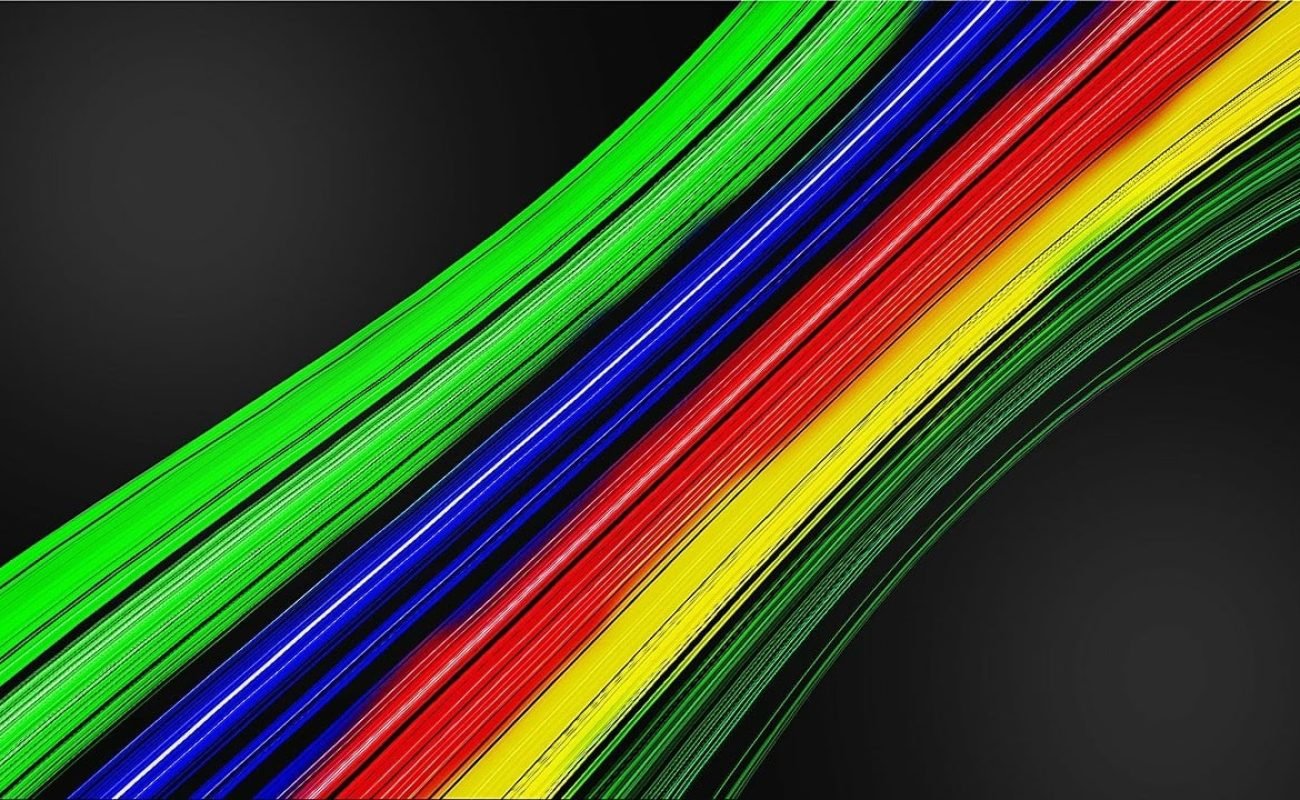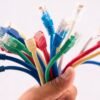Fiber optic cables receive their high-performance data networking through various forms of ‘reinforcements’. These reinforcements come in different materials, each having its own applications. Some of these materials include:
- Арамидная пряжа
- Polyester Yarn
- Glass Yarn
- Steel Wire Rope
- стеклопластик
- Водоблокирующая лента
- Spiral Armor
- Corrugated Steel Tape
- Fiber Jelly
- Cable Jelly
- Рипкорд
These reinforcements are present in all fiber optic cables. They enhance the cable’s strength and durability by protecting the fibers from wear. This article will discuss these components in detail, outlining the special characteristics of each for your understanding.
Components of Fibre Optic Cables
Here are the best reinforcements for fiber optic cables in the market. Some reinforcements are better for certain applications than others. Therefore, it’s essential to know the differences between them all.
Арамидная пряжа
Firstly, aramid yarn is a common component in fiber optic cables. It contains aromatic polyamides, which enhance the cable’s tensile strength.
The yarn can easily absorb impact, which is why it’s placed as a protective coating over the fiber. As a protective coating, the aramid yarn absorbs the impact instead of the fiber.
Overall, aramid yarns have high heat resistance, which adds to their desirability. They’re also hard to cut and require specialized scissors to be cut down. In this way, the yarn ensures a longer life of the fiber.
Aramid yarn cables are usually used in automotive machinery and equipment. They can also be used in jet engine closures.
Polyester Yarn
Secondly, there’s polyester yarn, which also provides stability to the cable core. Like aramid yarn, polyester yarn also has impressive tensile strength. It also possesses similar resistance to moisture and high temperatures.
However, it is smaller in volume and has lower shrinkage levels. It doesn’t absorb impact as well as aramid yarns. At the same time, it doesn’t collapse or loosens easily. Hence, it is more durable.
Polyester yarn is used to make cover fiber optic cables, harnesses, and industrial hoses.
Glass Yarn
Glass yarn is another example of yarn reinforcements. It usually involves a glass layer inserted on the outer side of the cable. This layer creates a shield, protecting the fibers inside.
Glass yarn is stronger than aramid or polyester yarn. Since glass is more transparent, it allows for easier refraction and reflection of light from the fibers. As such, they allow for a lower refractive index, which improves the fiber’s functioning.
Moreover, glass yarn reinforcements usually come with nylon coatings, which enhance resistance to oils or chemicals.
Steel Wire Rope
Fourthly, there are steel wire ropes, which are separate wire strands joining to form a ‘rope’. This rope is then enclosed over the cable’s core. To ensure more protection and resistance to abrasions, thicker wires are preferable.
However, be mindful; thicker wires limit flexibility, making them harder to handle. Therefore, if the fiber optic cable is being used for internet or computer networking, smaller wires are recommended. These applications require less bulky wires to ensure smoother data transfer.
To select the right steel wire rope, it is essential to assess the 6×36-FC. Here, the ‘6’ indicates the number of wire strands whereas the ‘36’ represents the number of wires inside the strand. FC represents the type of core in the fiber optic cable.
стеклопластик
Steel wire rope is often compared to Fibreglass Reinforced Plastic (FRP). FRP optic cables are similar to steel cables in terms of weight and durability. However, they’re deemed stronger than steel or aluminum when running in lengthwise directions.
FRP uses multiple polymer resins, which lend the material more stiffness. Therefore FRP cables retain their shape and durability for longer periods. Moreover, these cables are less corrosive than steel-reinforced cables.
FRP wires also have excellent drainage and ventilation. Therefore, they can work well for lightweight cables. All this makes FRP cables good options for long-term use. FRP cables are mostly used in mechanical inspections and automotive applications.
Водоблокирующая лента
Water blocking tapes are commonly used in both fiber and data cables. They are more popular in the telecommunications and networking industries. Essentially, water blocking tape is made of three components: tape, yarn, and coating. All three are bound tightly to block water leakage into the core of the cable.
These tapes use a specific polymer, which absorbs any moisture that may seep in if insulation fails. The polymer will swell up to prevent further moisture ingression, ensuring the safety of the cable. As such, these tapes are excellent if you’re installing wiring in high-moisture areas.
Consequently, while they are commonly used in the telecommunications and data transmission industries, they’re best suited for sub-sea cable market sectors.
Spiral Armor

The next on the list is spiral armor, which is best suited for outdoor use. Spiral armored cables have dual metal braiding layers. Some spiral armored wires have polyethylene and fiber yarn braids as well. The material is not as significant as the spiral shape formed by the braids.
The spiral acts as a protective outer layer. Therefore, it’s difficult to cut through, especially by rodents. If the cable is specifically for outdoor use, both the internal and outer layers will have features that prevent mechanical damage.
For instance, the outer enamel is usually very difficult to chew through, which deters rodents and other insects from damaging it. Moreover, spiral armored wiring is waterproof like water blocking tape.
However, instead of swelling up, the spiral armor simply draws moisture away from the cable’s body. In this way, spiral armored cables are perfect for harsh weather conditions. They’re also very flexible, which is good for absorbing impact.
These cables have various industrial applications. However, they’re mostly used in data centers and building backbones.
Corrugated Steel Tape
Corrugated steel tapes are perfect for underground applications such as drainage wiring. Corrugated steel cables are usually buried directly or installed through ducts. Since they’re underground, they are exposed to all sorts of moisture, rodents, and insects.
As such, these tapes embody features, which assure the strength and the integrity of the cable. For example, many corrugated steel tapes come with polyamide fibers. These fibers prevent termite infestations.
Moreover, these steel tapes are easily accessible in different shapes and sizes. These shapes and sizes suit different drainage needs.
On average, round corrugated steel tapes are 6 inches and 26 feet in size. Larger sizes are available as well. These tapes last between 50 and 100 years. Therefore, their durability is unmatched. They’re ideal for creating construction foundations.
Fiber Jelly
As the name suggests, fiber jelly cables have a jelly-like structure. This structure comes from a lubricant substance inserted into the fiber. This substance makes these cables the best option for maximum impact resistance.
These cable reinforcements allow the cable to retain its shape for longer periods. Moreover, these cables are lightweight and have impressive temperature durability. They can also prevent fiber optics from delamination for longer periods.
However, they do have some cons. For example, they’re not as waterproof as other non-gel cable reinforcements. Moreover, they don’t work well in harsh environments.
Accordingly, these wires are better suited for indoor use. For instance, they can be installed in an office setting.
Cable Jelly
Cable jelly cables are another example of gel-based reinforcements. In the world of telecommunications, it’s essential to have reliable cables, so that consumers don’t experience constant interruptions.
Cable jelly reinforcements aid this process due to their thickening properties. These thickening properties enhance resistance to any type of moisture. Moreover, cable jelly wirings have shear-thinning gels, making them compatible with different oils and chemicals.
Therefore, they are difficult to degrade even after exposure to corrosive substances. Overall, these reinforcements are best for telecommunications as they ensure more stability in connectivity, which improves cellular data and signals.
Рипкорд
Lastly, ripcord cable reinforcements are essential for most industrial applications. They allow machinery and heavy equipment to communicate signals more efficiently. In fiber optic cables, ripcords are inserted underneath the jacket (the outer coating).
Ripcords facilitate the removal of the jacket, making it easier to remove it without damaging the inner fibers. Therefore, ripcord wires are usually situated in a parallel manner. Moreover, they’re made with high-quality yarn, which has excellent strength.
Ripcords help keep the cable screens in perfect condition. When removing the jacket, it’s easy to damage the screen without proper protection. Many things can go wrong, including the outer jacket getting stuck to the cable screen. Ripcords prevent this from happening.
On the whole, ripcord cables usually have nylon or polyester construction. These materials make it less abrasive. Considering all this, ripcord cables are ideal for applications, which require constant installation and re-installation.
For instance, internet optic fibers require updating from time to time. Ripcords are recommended reinforcements for such cases.
Заключительные слова
This article highlights the main strengthening components of a typical fiber optic cable. The uses for each of the components have been discussed in detail. Contact us to seek professional guidance and help regarding fiber optic cables and their manufacturing equipment. If you found this article helpful, don’t forget to share this article within your social circle.










